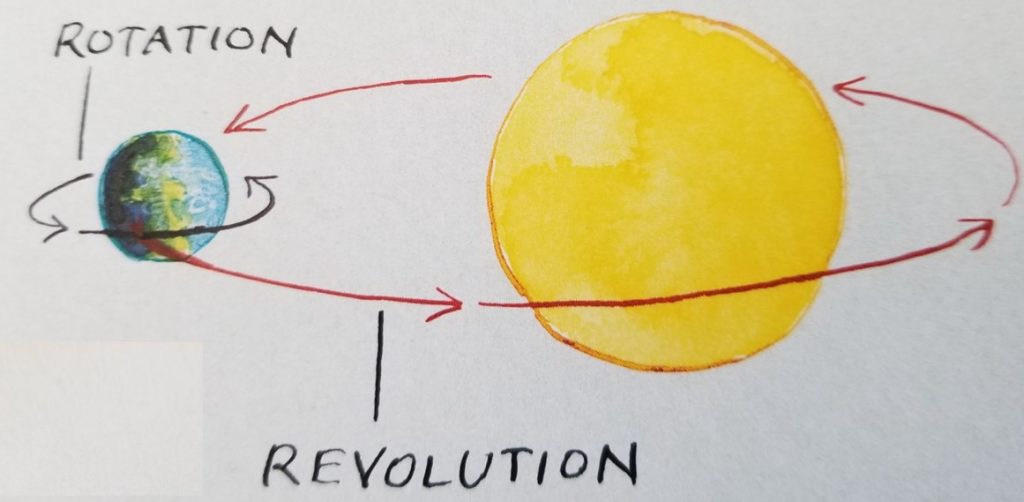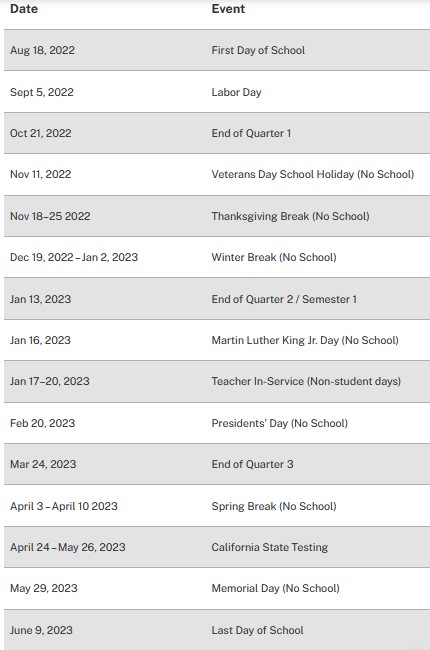PART 4: ORGANIZING TIME
You just read several chapters about the patterns that organizing systems follow for different types of resources. When we organize our time resources, we also need to identify, create, and follow patterns.
It helps to think of three categories of time patterns:
- NATURAL time patterns are based on astronomical or land-based events that occur in regular cycles. We don’t create natural patterns, but for tens of thousands of years, humans have been trying to discover them. Today, everyone uses the natural time units of day, year, and season to organize their lives. And don’t forget “month” (which should be called “moonth”) because it is based on the cycle of the moon phases as it orbits the earth. These natural units are now built into calendars, planners, clocks and other “time technology” that helps us organize our time.
The time unit we call DAY is based on the rotation of the Earth. This creates the illusion that the Sun is going around it when it rises and sets every day. The revolution or orbiting of the Earth around the Sun is the natural pattern we call the year.


- DIRECTED time patterns are created by other people or organizations. They are “directed” because you don’t create them, but you have to follow them. Your life as a student is very much affected by the directed patterns of the school year that control the schedule of courses you take. You have to attend school on school days, and you don’t go to school on vacation days or holidays.The parts of the school day — class periods, recess, lunch — are also directed patterns. Other directed patterns are the schedules for practices, games, and performances for sports, music, and other activities you take part in.
- PERSONAL time patterns are the ones you create when YOU organize everything you have to do or want to do. This is called PLANNING, SCHEDULING, or TIME MANAGEMENT. Even if you have many directed time patterns to follow, you will have some time to do things that you choose to do.
You might not realize it, but you are following patterns in your personal time. You might be a “morning person” who likes to get up early to read a book before going to school, or a “night person” who likes to stay up late and play video games. You might like to hang out with your friends at the end of each school day before walking or biking home.
Some people like to make plans for events far off in the future . Other people make fewer plans so they can be more spontaneous in deciding how to spend their time. Some people get a new calendar every year and fill it with events, while other people look ahead only a week or day at a time.
NATURAL and DIRECTED patterns influence your PERSONAL time patterns.
-
- You might be a morning person who gets up early when the sun shines into your bedroom, what time is “early” depends on the season. Days are longer in the summer and sunrise comes earlier in the day (if you live in the Northern Hemisphere).
- Your parents might sign you up for after school and weekend activities that they think are good for you. But the result might be that you don’t have much time left to do personal things.
Plan for this Part of the Book
The next chapter, “MANAGING YOUR TIME BETTER,” talks about some common problems people have with managing their time. It then introduces three ideas about how to solve these problems using the concepts and methods for managing things that you have already learned in this book.
- MAKING AN INVENTORY OF YOUR TIME EVENTS. Remember the lesson about organizing the items you collected on Halloween? You started by making an inventory to see what types of items and how many of each you had. This is also important when you need to organize time. Your inventory for time is a list of all the things you have to do (DIRECTED events) or might want to do (PERSONAL events).
- THINKING LIKE A “TIME ARCHITECT.” A master organizer also thinks like an architect. Remember that an architect designs a building and creates the instructions for the people who construct the building afterwards (the blueprint). An organizing architect creates categories for organizing things that go together, and after that is done, the things are arranged so they can easily be found when they are needed. A “time architect” analyzes the inventory of events carefully so they can be scheduled in sensible ways. The schedule is then recorded in a planner or calendar.
- CHOOSING THE RIGHT SIZE OF “PIECES OF TIME.” A master organizer also knows that the same resource is sometimes thought of as one thing, and sometimes thought of a collection of parts (remember the examples of puzzles, bicycles, and sports teams?). The same issue comes up when you organize time. If you think of a big task as just one thing to do, it can seem too hard to, and it is easy to underestimate the time to do it. But if you break it into smaller pieces, you can better estimate the total time and can more easily fit these smaller tasks into your schedule.
The last chapter in this part of the book is “ORGANIZING WITH ASTRONOMY AND ITS NATURAL TIME UNITS.” It explains how the cycles of the Earth, Moon, and Sun create natural units of time that help us organize our lives.

